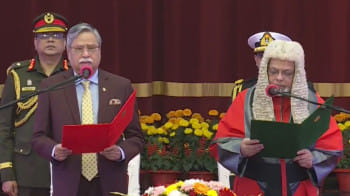Bangladesh Women hungry for big-event exposure

As Tamim Iqbal waltzed his way to a century in Dharamsala to give Bangladesh an entry into the Super 10s stage of the World T20, 15 women and their support staff were glued to their television sets at the team hotel in Bangalore. After the match was won, there was a celebratory dinner that encapsulated the mood of the entire nation.
It was a throwback to 2014 , where Bangladesh Women let their hair down and celebrated their win over Sri Lanka, their first and only win at the World T20. The win that was witnessed by over 10,000 fans in Sylhet was followed by a fashion show and fireworks display at the team hotel. But opportunities to celebrate wins like those have been far and few, as the team has hardly had any international exposure since then.
Bangladesh will be playing their second straight World T20. In 2014, they secured a direct entry by virtue of being the hosts, but this time around, the team went through a qualifying round in Thailand in November 2015, and sealed their berth along with Ireland in the 10-team event. But the jarring truth is that they haven't played enough cricket in the build-up to the upcoming tournament.
Their last international match, before the WT20 Qualifiers, was in Pakistan in October 2015. South Africa's limited-overs tour of Bangladesh was cancelled on security grounds in November, while the Under-19 World Cup in January and February meant they had to make do with training sessions under the purview of their own districts.
Makeshift grounds, matting wickets and matches with Under-16 boys can hardly replace the kind of experience they would get by playing the top teams. And the ICC's ongoing Women's Championship, where the top eight teams play each other over a two-year period to identify four direct entries to the 2017 World Cup, means opportunities continue to remain far and few for Bangladesh.
"That win will be very special, but we haven't been able to play too many matches. I'm hopeful of doing something like that here too," says Jahanara Alam, the Bangladesh captain, as she reminisces a win that catapulted the team into stardom. "People were garlanding us, celebrating it like we had won a World Cup. Visitors kept coming home for weeks after that. Now, we will be playing on television at a big event for the first time, and everyone is excited. Other teams are stronger than us, but we are still representing a passionate set of followers back home, and a win or two here will make us superstars."
Prior to their World T20 win, Bangladesh's only claim to fame was their medal-winning performance at the 2010 Asian Games in Guangzhou, where they narrowly missed the gold medal after being outclassed by Pakistan in a close contest. India's non-participation made it easier, but the weight of that achievement brought them recognition and funding.
In 2011, they finished fifth, above Ireland at the qualifiers for the 2013 World Cup. While they narrowly missed out on an entry into the biggest stage in India, their ODI status was formally sealed, four years after the team came into existence. ODI status brought with it the need to bring up the team to acceptable standards. It was around then that Mamatha Maben, the former India captain, was made head coach. She later went on to become technical director of the BCB women's wing.
"Naturally, they were all athletic, which was surprising," Maben says. "What they lacked was exposure outside Dhaka. Facilities weren't up to the mark at the smaller centres, the players did not have physios or trainers to monitor them. They had to look after themselves and train with modest facilities. Some came through despite that, others couldn't sustain."
Jahanara, who was yet to make her international debut when the team got ODI status, was one among those who made a switch. She had already represented her districts in volleyball and was on the brink of national selection, when she decided to become a bowler. It was a decision she doesn't regret, even though she feels the sport has a long way to go in the country.
"I used to play volleyball and handball, but chose cricket because of the following it gained 2007, where the men's team qualified for the second round [in the World Cup]. Since the time I started playing, there has been a steady increase in enrollments at our academy. Right now, we are playing districts and division matches, and against Zimbabwe and Ireland. If we play more regularly, we can be a better team."
To give the players more match time, the BCB introduced a first-division league with eight teams in 2014. Six months later, a districts competition with 14 teams was introduced. Apart from a domestic league, the BCB introduced retainers to the top players. Under the scheme, five top players in Grade A take home a salary of BDT 30,000 a month, while those in Grade B and C draw 20,000 and 10,000 respectively.
"From 400, there are nearly 1500 girls playing cricket now, but the number is still far less than other countries," says Awal Chaudhary, the BCB women's wing director. "Football is popular; athletics scene is improving slowly, so our challenge is to ensure girls are not leaving the game after two-three years of cricket. The Bangladesh Cricket Board has pumped in more money into the women's wing, but so far our efforts of playing the top eight haven't been economically viable. But it is an ongoing process. Our first aim is to break into the top eight of the rankings, which we can hopefully achieve by qualifying for the 2017 World Cup."

 For all latest news, follow The Daily Star's Google News channel.
For all latest news, follow The Daily Star's Google News channel. 








Comments